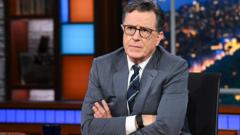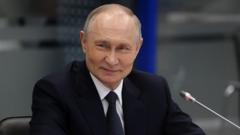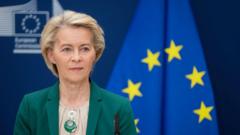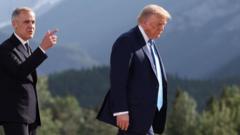In the face of gender-driven expectations, Kamala Harris secured majority votes from women but failed to achieve the historic margins necessary to overcome Donald Trump. This article delves into the reasons for Harris's shortfall, highlighting crucial issues such as economic concerns, messaging failures among specific demographics, and the lingering implications of gender bias in the electorate.
Kamala Harris’s Campaign Misses Key Female Voter Support in Crucial Election
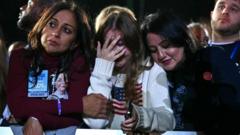
Kamala Harris’s Campaign Misses Key Female Voter Support in Crucial Election
Despite a sustained effort to connect with women, Kamala Harris's campaign fell short of securing the vital support needed for victory in the recent election.
Kamala Harris's recent presidential campaign hinged on the expectation that women would rally in significant numbers to support her candidacy. Polls leading up to the election indicated a notable gender gap, prompting Harris’s team to strategize around an increase in female voter turnout that could counterbalance losses in other demographics. However, the anticipated surge of female support didn’t materialize as needed.
While a majority of women ultimately voted for Harris, early exit polls reveal that her edge among female voters—approximately 10 percentage points—fell short of the historic levels achieved by Joe Biden in the 2020 election. Particularly striking was the 10-point drop in support from Latino women and a stagnant response from non-college educated women, who largely backed Trump.
Despite a robust campaigning effort that heavily highlighted reproductive rights, particularly in the wake of the overturning of Roe v. Wade, Harris's message did not resonate with all women equally. Throughout her campaign, she consistently framed the fight for abortion access as a central issue, pledging to restore rights that she argued were unjustly stripped away by Trump and his appointed judges.
Pollster Evan Ross Smith observed that while women who deeply value abortion access tended to vote Democrat, Harris could not sway those women who did not see the issue as urgent. Significant numbers of non-college educated women remained unmoved by abortion rhetoric, while Latino voters also shifted away from the Democrats.
As the election approached, economic worries dominated voters’ concerns, overshadowing issues like abortion. Voter Jennifer Varvar from Colorado expressed that financial pressure from inflation led her to vote for Trump, reflecting a broader trend where economic sentiment eclipsed social issues.
Gender dynamics undeniably played a role in Harris's defeat. Analysts suggest that societal sexism endures, impacting perceptions of female candidates. Unlike Hillary Clinton, who embraced her trailblazing role as a female candidate, Harris showed more restraint in emphasizing her gender's historic significance.
Despite perceptions that the electorate has grown more accepting of female leadership since Clinton's second run in 2016, certain polls indicate persistent hesitance among voters towards female presidential candidates. Trump’s campaign benefitted from a renewed emphasis on traditional masculinity, creating barriers for female candidates that might not be as pronounced for their male counterparts.
As America grapples with evolving societal roles and electoral dynamics, the implications of Harris's campaign trailblazing provide insight into the continuing challenges and complexities female leaders face in the political arena.

